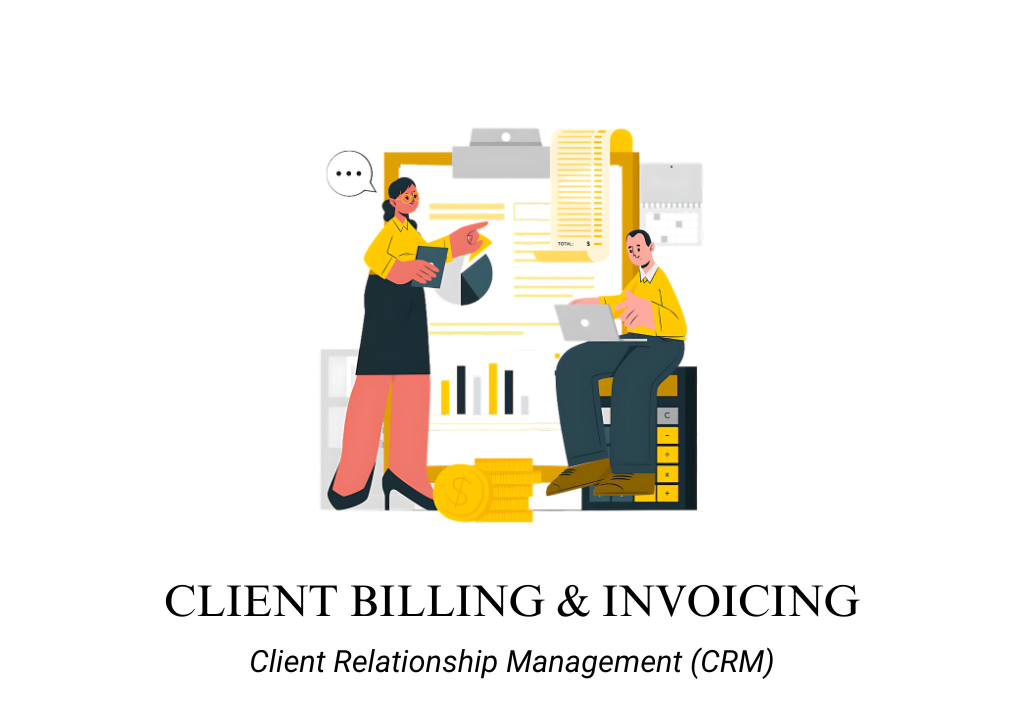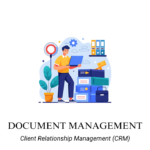Introduction
Client billing and invoicing are crucial components of legal practice management. Client Billing refers to the process of charging clients for legal services rendered, while Invoicing involves the formal documentation of these charges, typically issued at the conclusion of a billing cycle. In the legal industry, the intricacies of billing, which may involve multiple fee structures, complex case durations, and a variety of services, require careful and precise handling.
A robust client billing and invoicing system helps law firms manage payments efficiently, avoid disputes, and ensure that they are properly compensated for their services. Legal professionals often work under various billing arrangements, ranging from hourly rates to flat fees and contingency-based models, depending on the client and the nature of the case. These systems not only streamline the financial aspects of legal case management but also improve client trust by offering transparency and clarity in how fees are calculated and invoiced.
Purpose
The primary purpose of client billing and invoicing in the legal industry is to ensure accurate and timely compensation for the services provided by legal professionals. By tracking billable hours, case-related expenses, and other costs associated with a case, these systems provide law firms with a reliable method for generating invoices, managing different fee arrangements, and automating the invoicing process where possible.
Legal professionals benefit from efficient billing systems as they minimize administrative burdens, reduce the risk of billing errors, and ensure compliance with client agreements. For clients, clear and well-documented invoices reduce confusion and disputes, enhancing the overall relationship with the law firm.
Benefits and Use Cases
- Enhanced Cash Flow Management: Law firms that adopt effective billing and invoicing practices improve their cash flow by reducing delays in payment collection. By automating invoice creation and sending, firms can generate invoices as soon as billable work is completed. According to a report by the Legal Trends Report 2021, firms using automated invoicing systems see payments 25% faster compared to firms that rely on manual billing processes.
- Transparent Fee Structures: Different legal matters require various fee arrangements. By offering clear documentation of how fees are calculated, firms improve trust and minimize billing disputes. Clients can see exactly what they are paying for, whether it’s hourly, flat-fee, or contingency-based billing.
- Time Savings and Efficiency: Legal professionals are often juggling multiple cases at once. Automated invoicing and structured billing systems reduce the administrative load, allowing attorneys to focus on case work while ensuring that billing processes run smoothly in the background. According to industry data, automated invoicing can save firms up to 30% of the time spent on manual billing tasks.
- Reduction in Billing Errors and Disputes: Inaccurate billing, either undercharging or overcharging, can lead to financial losses or disputes with clients. Efficient billing systems with built-in checks ensure accuracy in billing, minimizing errors that could lead to client dissatisfaction or costly legal disputes.
Features of Client Billing and Invoicing
Multiple Fee Arrangements
Definition: Multiple fee arrangements refer to the various billing structures that law firms use to charge clients for legal services. These arrangements can include hourly billing, flat fees, contingency fees, and hybrid models, depending on the type of case, the client’s preferences, and the firm’s policies.
Purpose: The purpose of offering multiple fee arrangements is to provide flexibility in billing, ensuring that legal professionals can cater to different types of clients and cases. Different legal matters require different approaches to billing, and having a system that can accommodate various fee models allows law firms to better meet the needs of their clients.
Use Case: A corporate client may prefer an hourly fee arrangement for complex litigation where the scope of work is uncertain, while a personal injury case may be handled on a contingency basis, with the attorney only being paid if the case is won. Offering both options ensures that the law firm can cater to diverse client needs and maintain competitiveness in the market.
Benefits:
- Provides flexibility to accommodate different case types and client preferences.
- Improves client satisfaction by offering tailored billing solutions.
- Allows law firms to diversify their revenue streams through different billing models.
- Simplifies the tracking of diverse fee structures within one system, reducing administrative complexity.
Common Fee Arrangements:
- Hourly Billing: The client is charged based on the number of hours worked by legal professionals. This is the most common arrangement for complex cases with uncertain timelines.
- Flat Fee: A set fee is charged for specific services, such as drafting a contract or representing a client in a minor legal matter. This arrangement is typically used for well-defined legal services.
- Contingency Fee: The lawyer only gets paid if the case is won. This arrangement is common in personal injury and other litigation cases.
- Retainer Fee: The client pays an upfront fee to secure the services of a lawyer, with the amount deducted from the total cost of services over time.
- Hybrid Models: Some law firms offer a combination of billing arrangements, such as a flat fee for initial services and an hourly rate for additional work.
Invoice Creation
Definition: Invoice creation refers to the process of generating detailed bills for clients that outline the legal services provided, the time spent on each service, and the associated costs. These invoices include itemized charges for billable hours, expenses, and any other relevant costs related to the case.
Purpose: The purpose of invoice creation is to provide clients with a transparent and accurate summary of the legal services they have received, along with the associated fees. Well-structured invoices ensure that clients can understand the breakdown of costs, reducing confusion and minimizing the potential for disputes.
Use Case: A law firm handling a corporate merger case generates an invoice at the end of the month, detailing the hours spent on contract drafting, negotiations, and client meetings. The invoice includes itemized expenses such as court filing fees and third-party consultant costs. This clear documentation allows the corporate client to understand exactly where their money is going and ensures timely payment.
Benefits:
- Improves transparency by clearly outlining services rendered and associated costs.
- Helps clients understand their financial obligations, reducing the risk of payment delays or disputes.
- Ensures that law firms can bill clients accurately for all services and expenses incurred.
- Facilitates quick invoicing, improving cash flow by ensuring timely payments.
Invoice Features:
- Detailed Line Items: Each service or expense is listed with a description, date, and cost, providing a clear breakdown of charges.
- Customizable Templates: Law firms can tailor invoice templates to reflect their branding and specific client needs.
- Tax Calculation: Invoices automatically include applicable taxes, ensuring compliance with local tax regulations.
- Expense Reimbursement Tracking: Any out-of-pocket expenses incurred by the legal professional, such as travel or filing fees, are included in the invoice.
- Time-Tracking Integration: Invoices pull data directly from the time-tracking system, ensuring accuracy in billing for time spent on client work.
Automated Invoicing
Definition: Automated invoicing is the process of using technology to automatically generate, send, and track invoices without the need for manual input. In legal practice, this involves integrating billing and time-tracking software to streamline the entire invoicing process, from the generation of the invoice to payment collection.
Purpose: The purpose of automated invoicing is to eliminate the need for manual invoice creation, reduce human error, and speed up the billing process. By automating this task, law firms can save time, improve accuracy, and ensure that clients are billed promptly, which helps improve cash flow and financial management.
Use Case: A law firm representing multiple clients in family law cases uses an automated invoicing system that generates invoices at the end of each month based on the billable hours tracked by the legal professionals working on the cases. The system automatically sends the invoices to clients, tracks payment status, and sends reminders to those who have outstanding balances, reducing the need for manual follow-up.
Benefits:
- Saves time by automating the invoice generation and delivery process.
- Reduces human error, ensuring accurate and consistent billing.
- Improves cash flow by ensuring timely invoicing and payment collection.
- Enhances client satisfaction by providing prompt, professional invoices.
- Tracks payment status, automatically sending reminders for overdue payments.
Automated Invoicing Features:
- Scheduled Invoices: Set recurring invoices for clients with ongoing legal work, such as monthly retainer clients, ensuring that billing happens consistently without manual effort.
- Automated Payment Reminders: Automatically send reminders to clients with outstanding invoices, helping law firms collect payments faster.
- Custom Billing Cycles: Firms can set billing cycles according to client agreements, such as weekly, monthly, or on completion of specific milestones.
- Real-Time Payment Tracking: The system monitors payments in real-time, updating invoice statuses as payments are received.
Conclusion
Client billing and invoicing are fundamental to the financial success of any law firm. The ability to offer multiple fee arrangements, create clear and detailed invoices, and automate the invoicing process enhances both the operational efficiency of the firm and the client experience. By implementing effective billing systems, law firms can improve transparency, reduce billing disputes, and ensure timely payments. These features allow legal professionals to focus on their core work while maintaining financial control and ensuring client satisfaction.
Guide to find best Client Relationship Management (CRM) for lawyers
CHECK OUT CRM TOOLS ON DIRECTORY OR CLICK HERE


